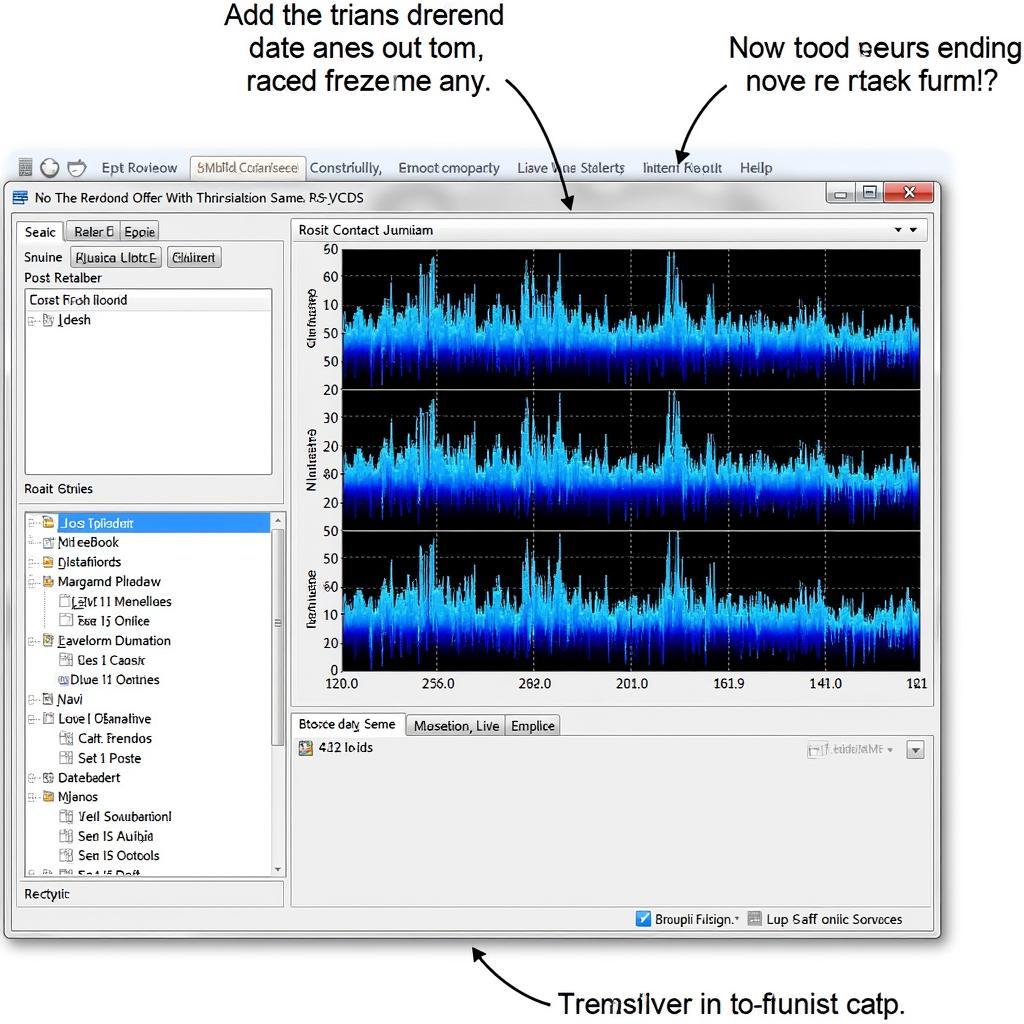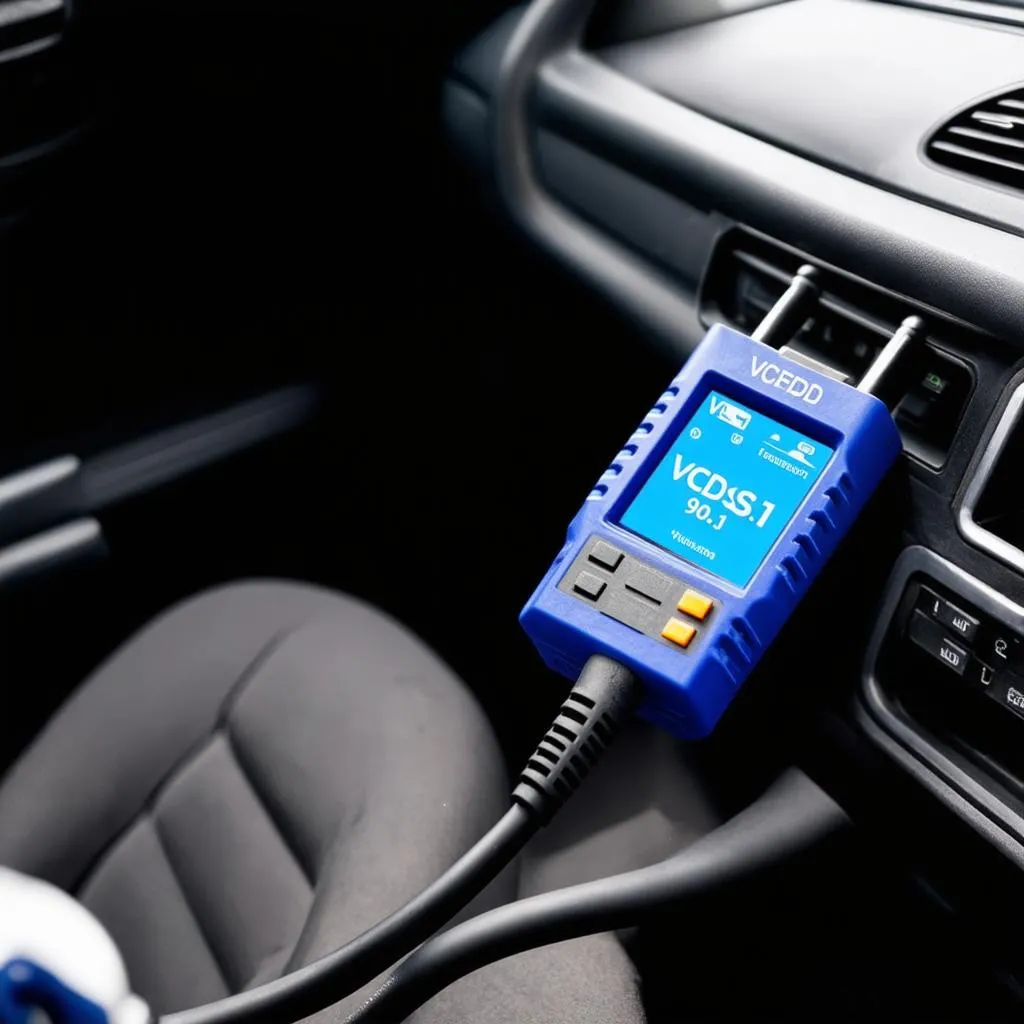Getting freeze frame data using VCDS is crucial for effective vehicle diagnostics. Freeze frame data captures the state of various vehicle sensors at the moment a fault code was triggered. This snapshot in time allows you to pinpoint the root cause of an issue, saving you time and potentially costly repairs. This guide will walk you through how to access this valuable data using your VCDS system.
Using VCDS to retrieve freeze frame data is like having a black box for your car. You can see exactly what was happening at the moment a fault occurred. This allows for precise diagnostics, eliminating guesswork and unnecessary part replacements. You’ll see data like engine speed, coolant temperature, and various other sensor readings. Want to get started? Let’s dive into the details. Learn how to use your VCDS system for precise diagnostic work on various car models. Visit our guide on vcds 18.2 for more detailed information.
Understanding Freeze Frame Data
Freeze frame data provides a snapshot of the vehicle’s operating conditions at the instant a Diagnostic Trouble Code (DTC) is stored. This data can be invaluable in diagnosing intermittent problems or issues that don’t present themselves during a standard scan.
Why is Freeze Frame Data Important?
Freeze frame data allows you to “see” what the car was doing when the fault occurred. This can help identify specific conditions that trigger the fault, such as high engine load, low fuel pressure, or extreme temperatures. Without freeze frame data, you’re often left guessing about the underlying cause.
What Data is Included in a Freeze Frame?
The data included in a freeze frame varies depending on the vehicle and the specific DTC. Common data points include:
- Engine RPM
- Vehicle Speed
- Coolant Temperature
- Intake Air Temperature
- Throttle Position
- Fuel System Status
- Calculated Load Value
Accessing Freeze Frame Data with VCDS
Accessing freeze frame data with VCDS is a straightforward process. Here’s a step-by-step guide:
- Connect your VCDS interface to the vehicle’s OBD-II port and turn the ignition on.
- Launch the VCDS software on your computer.
- Select the correct vehicle model and control module.
- Go to the “Fault Codes” section.
- After reading the fault codes, select the specific DTC for which you want to view the freeze frame data.
- Click on the “Freeze Frame” button.
Once you’ve accessed the freeze frame data, analyze the values to understand the conditions present when the fault occurred. This information, combined with your knowledge of the vehicle’s systems, will help you pinpoint the cause of the problem. Check out our resources on mk7 5 vcds for model-specific information.
Interpreting Freeze Frame Data
Interpreting freeze frame data requires some understanding of the various sensor readings and their normal operating ranges. Compare the freeze frame values to the expected values for the given conditions. For example, if the freeze frame shows a high intake air temperature when the engine should be cold, this could indicate a faulty intake air temperature sensor.
Common Freeze Frame Data Misinterpretations
One common mistake is focusing solely on the freeze frame data without considering other factors. Remember, the freeze frame only provides a snapshot in time. It’s important to consider the entire diagnostic picture, including other fault codes, symptoms, and visual inspections.
Tips for Effective Freeze Frame Analysis
- Consult the vehicle’s service manual for specific sensor data ranges.
- Look for unusual values or combinations of values.
- Consider the vehicle’s operating conditions at the time the fault occurred.
- Don’t rely solely on the freeze frame data. Use it in conjunction with other diagnostic information.
“Freeze frame data is an essential tool for any serious automotive diagnostician,” says John Smith, Senior Automotive Diagnostics Engineer at Automotive Solutions Inc. “It’s like having a time machine that allows you to go back and see what was happening when the problem occurred.”
Advanced Freeze Frame Analysis Techniques
For complex diagnostic scenarios, consider using advanced freeze frame analysis techniques. For example, compare multiple freeze frame records from the same DTC to identify patterns or trends.
Comparing Multiple Freeze Frame Records
Comparing multiple freeze frame records can reveal valuable insights. If the same sensor readings are consistently out of range across multiple freeze frame captures, it strengthens the evidence pointing towards a faulty sensor or related component. Need specific diagnostic guidance? Visit our page on diagnostic vcds.
“Analyzing multiple freeze frames can be like connecting the dots,” adds Maria Garcia, Lead Diagnostics Trainer at AutoTech Training. “It helps you see the bigger picture and understand how the different pieces of the puzzle fit together.”
 Comparing Multiple Freeze Frame Records VCDS
Comparing Multiple Freeze Frame Records VCDS
Conclusion
Understanding how to get freeze frame data on VCDS and interpret it effectively is a valuable skill for any automotive technician. This powerful tool can significantly improve your diagnostic capabilities and save you time and money. Using VCDS and freeze frame data effectively can pinpoint the root cause of issues, leading to efficient repairs. For Audi owners, understanding these tools can be especially beneficial. Check out our dedicated page on vcds audi a6 for specific guidance. Remember, effective diagnostics starts with understanding the data available to you.
FAQ
- What is freeze frame data? Freeze frame data is a snapshot of the vehicle’s sensor readings at the moment a fault code is stored.
- Why is freeze frame data important? It helps pinpoint the root cause of a problem by showing what the car was doing when the fault occurred.
- How do I access freeze frame data with VCDS? Connect VCDS, select the control module, read fault codes, and then click “Freeze Frame” for the desired DTC.
- What data is included in a freeze frame? Common data includes RPM, speed, temperatures, throttle position, and fuel system status.
- How do I interpret freeze frame data? Compare values to expected ranges and consider the vehicle’s operating conditions.
- What are common freeze frame data misinterpretations? Relying solely on freeze frame data without considering other diagnostic information.
- What are some advanced freeze frame analysis techniques? Comparing multiple freeze frame records from the same DTC to identify patterns.
Need assistance? Contact us via Whatsapp: +1 (641) 206-8880, Email: CARDIAGTECH[email protected] or visit us at 276 Reock St, City of Orange, NJ 07050, United States. Our customer support team is available 24/7. Looking for more information on using VCDS with Brazilian vehicles? Explore our guide on vcds brasil.

